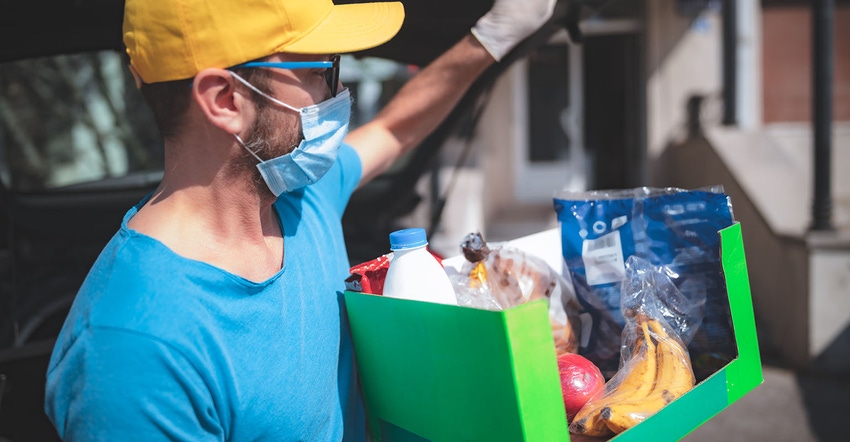
After crude oil futures astonished the world and traded to negative $40.00/barrel back in early April, prices have steadily rebounded.
Crude oil futures have been trading in a very narrow consolidation pattern for nearly two months. $40 has been technical price support, while $44 has been overhead resistance on the October 2020 futures chart. Demand for crude oil has improved, yet prices are not back to the early 2020 price level near $60/barrel.
While many commodity prices have been able to rebound back up to pre-COVID 19 sell off prices, most energy prices have not. Crude oil, heating oil, and rbob gasoline futures have a ways to go before getting back to 1st quarter prices points. Many wonder if they will be able to accomplish that feat before the end of 2020.
What’s ‘driving’ the demand drop?
As we reported in May, demand for diesel fuel, gasoline, and crude oil continues lower. With many schools opting for virtual learning and parents working from home, Americans are driving less, therefore demand for fuel is less. School busses are not running like normal, work travel is down substantially, traveling across the state on weekends for kids’ sport tournaments has come to a halt. Even college or professional sporting events are not drawing normal crowds that would have encouraged thousands of Americans to drive hundreds of miles on a Saturday or Sunday to cheer on their favorite team.
Instead, small driving trips to the grocery or local home improvement store have become the norm.
U.S. fuel demand will likely remain lower for the short term, or until a vaccine for COVID-19 can be secured. Globally, energy demand is slowly improving. However, a global recovery of energy demand also likely coincides with a vaccine.
Small supply cuts
OPEC agreed to production cuts early this summer, which helped reduce the amount of oil flooding the supply chain. Production cuts gave crude oil prices a boost. In August OPEC nations began to slowly ramp up production due to an uptick in global demand as economies were beginning to recover from the pandemic.
Even though recent U.S. crude production dropped by 1.1 million barrels last week to stand at 9.7 million barrels a day, the production drop was expected due to Hurricane Laura.
Overall crude inventory is still plentiful. According to the EIA, recent U.S. crude stocks came in at 498.4 million barrels, which is the highest amount seen for this particular week of the year, when compared to past years. Crude oil stocks are still well above year ago levels.
Ethanol takes a hit
With the drop in gasoline demand, ethanol demand has also suffered short term. U.S. ethanol production for the week ended August 28th averaged 922,000 barrels per day, down 8.98% versus from one year ago. USDA has cut corn demand for ethanol in previous reports due to the pandemic.
The question now on everyone’s mind: will they make future demand cuts in the upcoming USDA report?
While the outlook for energy demand remains modest for now, the longer term demand will improve, and improve quickly, once a vaccine is found.
While virtual learning is ok, classroom education with in-person learning has major benefits. Virtual conference calls and meetings are handy, but face-to-face personal interaction is invaluable.
Energy demand will improve, and so will energy prices, but in the short term, prices may be stuck in a bit of a rut.
Reach Naomi Blohm: 800-334-9779 Twitter: @naomiblohm and [email protected]
Disclaimer: The data contained herein is believed to be drawn from reliable sources but cannot be guaranteed. Individuals acting on this information are responsible for their own actions. Commodity trading may not be suitable for all recipients of this report. Futures and options trading involve significant risk of loss and may not be suitable for everyone. Therefore, carefully consider whether such trading is suitable for you in light of your financial condition. No representation is being made that scenario planning, strategy or discipline will guarantee success or profits. Any decisions you may make to buy, sell or hold a futures or options position on such research are entirely your own and not in any way deemed to be endorsed by or attributed to Total Farm Marketing. Total Farm Marketing and TFM refer to Stewart-Peterson Group Inc., Stewart-Peterson Inc., and SP Risk Services LLC. Stewart-Peterson Group Inc. is registered with the Commodity Futures Trading Commission (CFTC) as an introducing broker and is a member of National Futures Association. SP Risk Services, LLC is an insurance agency and an equal opportunity provider. Stewart-Peterson Inc. is a publishing company. A customer may have relationships with all three companies. SP Risk Services LLC and Stewart-Peterson Inc. are wholly owned by Stewart-Peterson Group Inc. unless otherwise noted, services referenced are services of Stewart-Peterson Group Inc. Presented for solicitation.
The opinions of the author are not necessarily those of Farm Futures or Farm Progress.
About the Author(s)
You May Also Like






